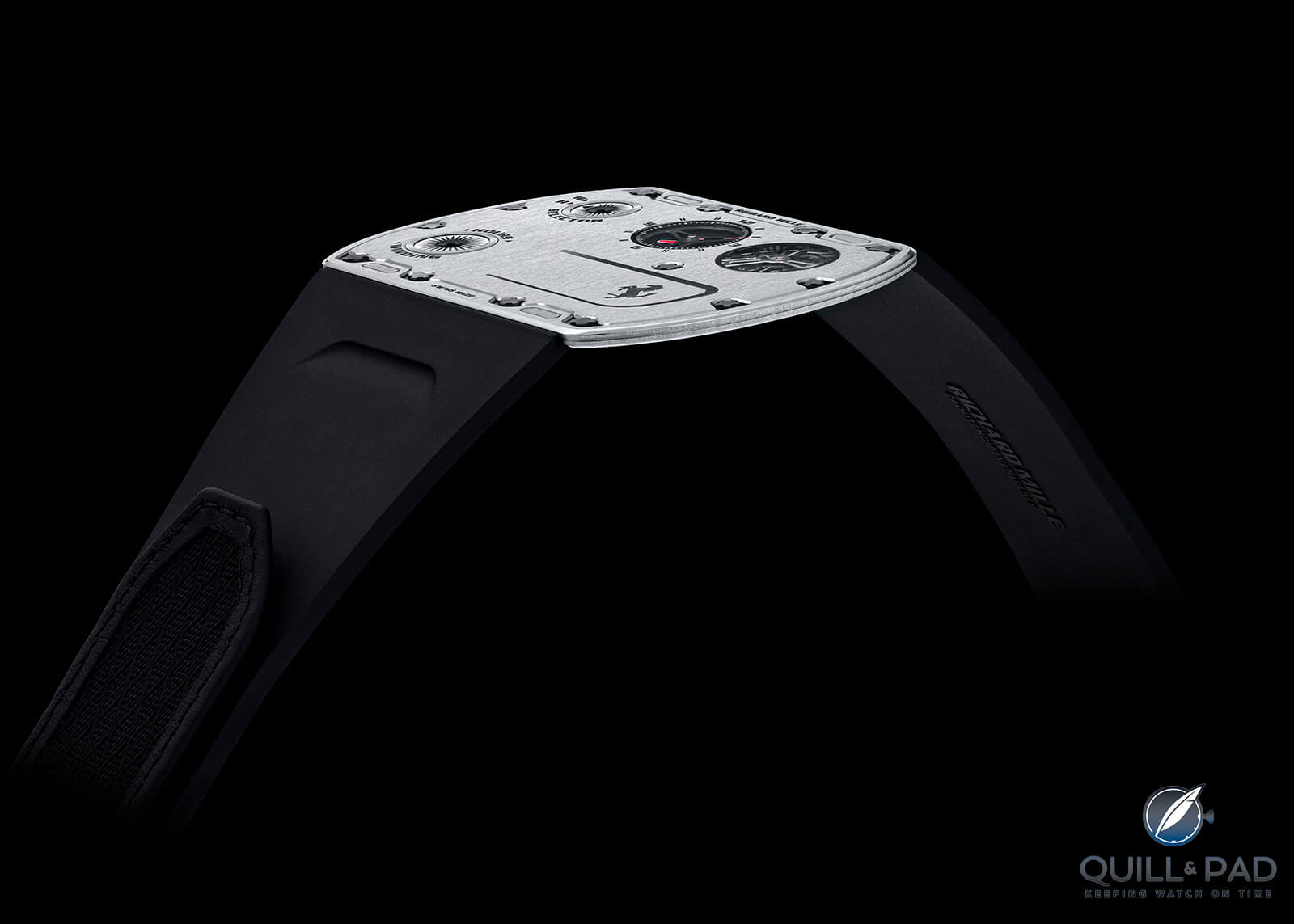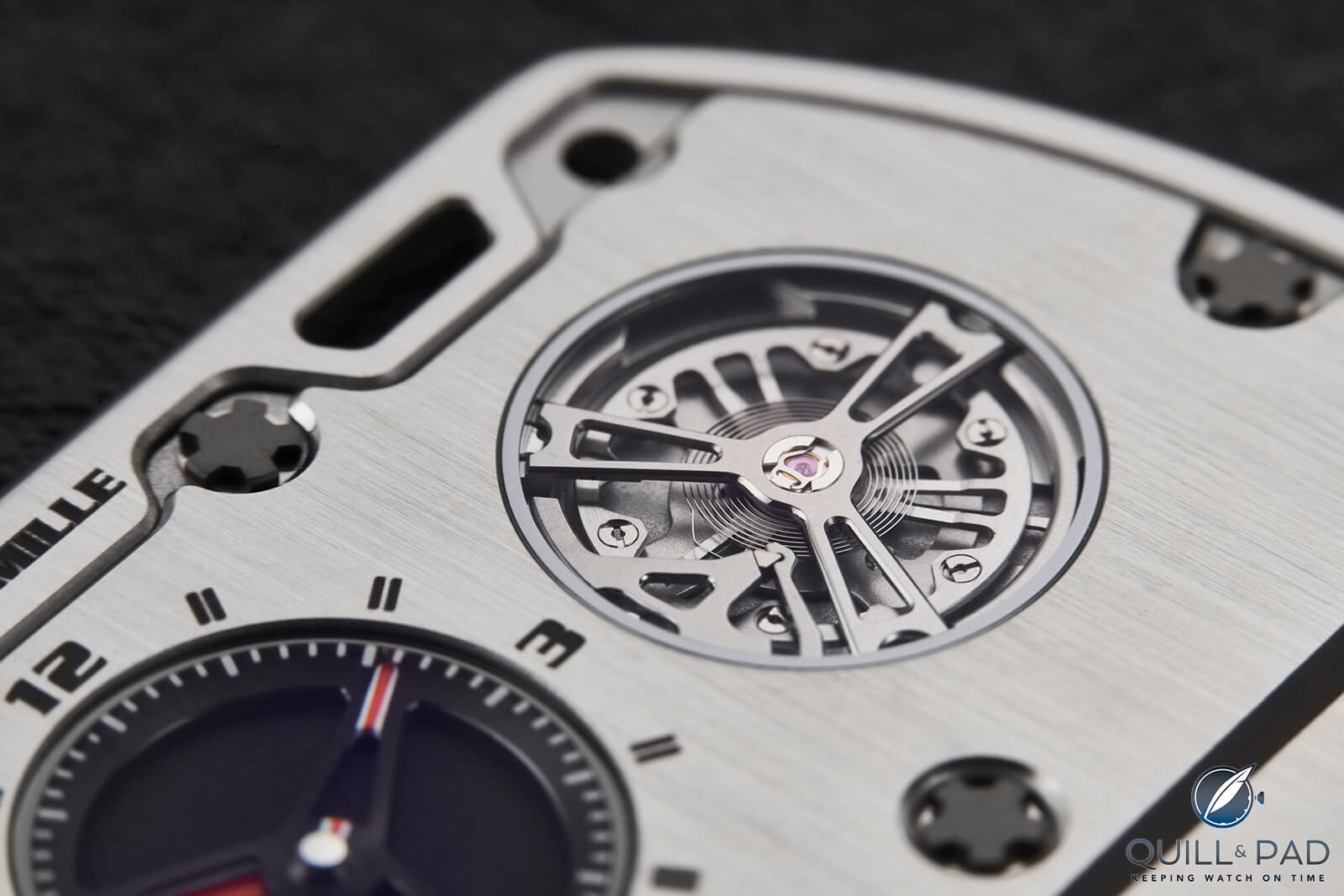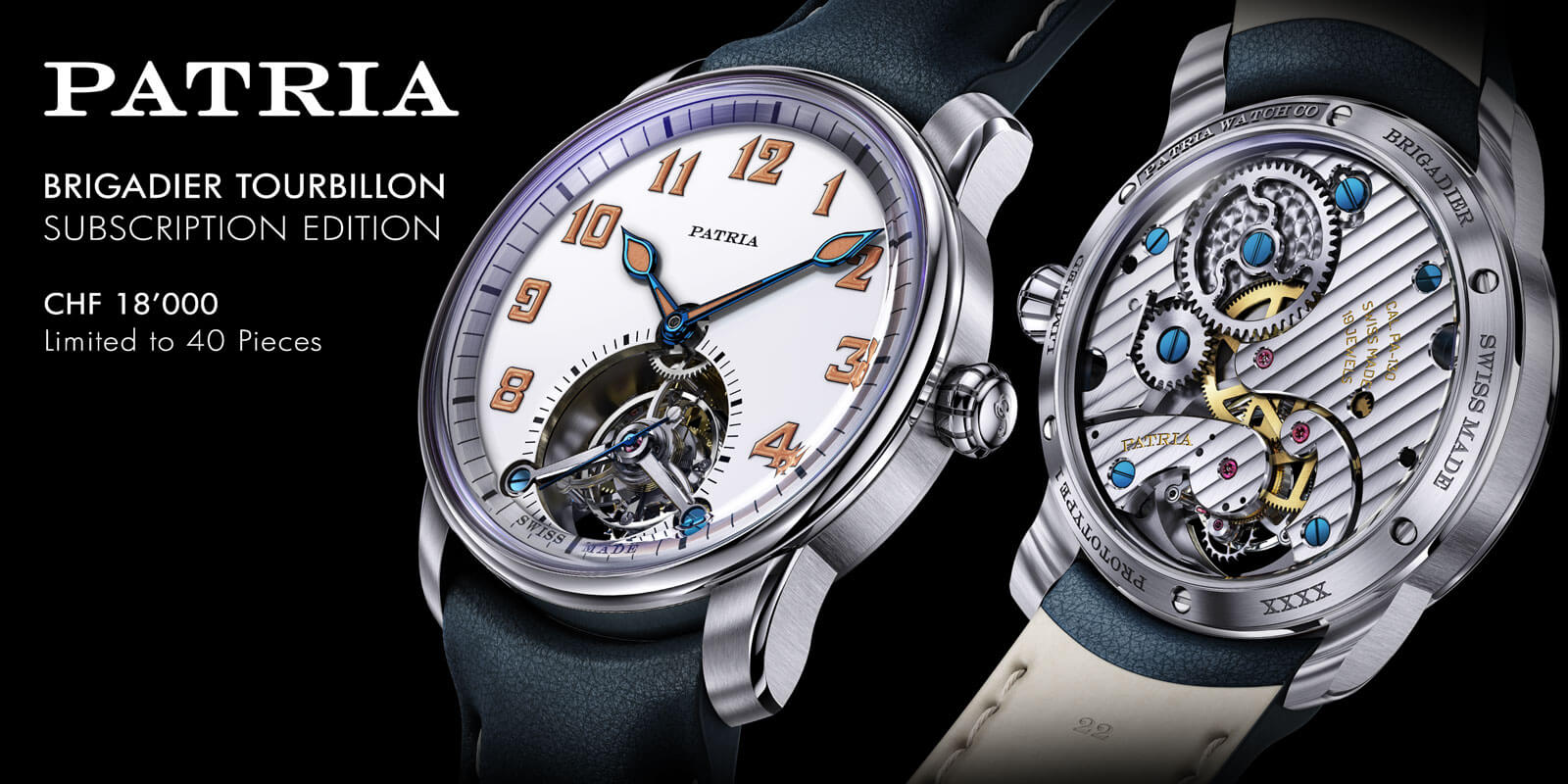Richard Mille RM UP-01 Ferrari: New World Record Ultra-Thin
“Chasing world records is the folly of dreamers and madmen, and only history can sort them out.” -Joshua Munchow, 2022
Quotes I just made up aside, world records have become a mystified area of knowledge for people to dive into ever since the first Guinness Book of Records was published in 1955. Originally the book was intended to be a repository of obscure or notable facts that people could use as a reference book to settle arguments and provide entertainment.
It was basically the original Buzzfeed Top Ten, nothing to be taken too seriously and more to act as a compilation of the best, fastest, strongest, biggest anything that could be measured and quantified.
Once the book became popular and the categories of records expanded to include human achievements, people started to suggest more and more categories in which one could compete for a world record.
Over time the Guinness Book company put more limitations on categories it would recognize to protect public and environmental health and safety. But even with those limitations, there are thousands of weird, wild, and extraordinary achievements by various people.

Richard Mille RM UP-01 Ferrari on the wrist
At its heart, though, the Guinness Book of Records is about documenting notable facts first, even if things like the fastest game bird and smallest functional internal combustion engine are at the core of what made world records so popular. People want to know random things out of sheer curiosity, and entire television shows, video games, board games, and museums in cities around the world have been created to share the wide collection of Guinness World Records.
For people or companies chasing world records, it can be a call to innovation, a push for personal achievement, or even a lifelong dream to be recognized for doing something extraordinary. Even if something or someone eventually beats your record, you still go down in history and are remembered as a one-time world record holder. This could spur friendly competition as the record changes hands and two people battle to remain the record holder.
In the world of watchmaking, there aren’t many brands that chase world records regularly, but some are known to always push the limits of watchmaking for dramatic effect. Historically, the quest for the thinnest mechanical watch (the most active record chase) has been dominated by a few names: Piaget, Jaeger-LeCoultre, Vacheron Constantin, and in the last decade the formidable Bulgari.
Piaget had often ruled the thinnest category with pieces from the 1960s all the way to 2020 with the Piaget Altiplano Ultimate Concept, blasting by the second thinnest watch by a fair margin. That held until 2022 when Bulgari came back with a vengeance with the Bulgari Octo Finissimo Ultra and bested Piaget by more than a 10 percent reduction in thickness, which seemed like a definitive nail in the coffin.
So imagine their surprise – along with the entire watch industry – when, only three short months later, Richard Mille stole Bulgari’s thunder and world record by releasing its own record-setting RM UP-01 Ferrari ultra-thin watch, eking past Bulgari by just 0.05 mm with a traditional-format movement housed within a case.

Richard Mille RM UP-01 Ferrari side on
My reaction was astonishment and excitement followed by a slight sense of sadness for Bulgari, whose engineers didn’t even get the summer to enjoy their record-setting accomplishment before being dethroned. But that is the nature of record chasing: history will sort out the attempts and we all just get to watch the show.
And what a show it is!
—————————————————————————————————–
—————————————————————————————————–
Richard Mille RM UP-01 Ferrari
The RM UP-01 Ferrari is a stunning feat for two main reasons: it is the thinnest mechanical watch in the world while also having a traditionally separate case and case back with movement sandwiched in between; and it meets some extreme requirements for shock and water resistance all while being only 1.75 mm in height.

Richard Mille RM UP-01 Ferrari
That is what I expect from Richard Mille, yet I did not see this watch coming. The most obvious reason is that is looks so incredibly different from literally every other Richard Mille in existence, yet thematically it fits with the ethos found in all other watches from the brand.
First, what is the RM UP-01 Ferrari and why should anyone care about it? Obviously, it is the new world record holder for the thinnest mechanical wristwatch. The thickness of the watch is the primary feature, which caused quite the stir upon its release as it hit 1.75 mm.
This beat the previous world record holder, the Bulgari Octo Finissimo Ultra, by a mere 0.05 mm, which had beaten the next previous world record holder by 0.2 mm.
That record, the two-millimeter Piaget Altiplano Ultimate Concept, was already a surprise back in 2018 so the fact two years later it was broken twice in a span of three months is a massively impressive feat.

A disassembled Richard Mille RM UP-01 Ferrari
The watch is made of titanium (not the cobalt or tungsten seen in earlier record-setting pieces from other brands) and is a fairly traditional two-piece case. By “traditional” I only mean in comparison to the techniques Piaget and Bulgari used to create their pieces, which saw the movement built directly into the case structure.
The RM UP-01 Ferrari eliminates a winding stem to maintain thinness and opts for two crown disks that pass all the way through the movement and case as the main wearer interaction with the watch.

Richard Mille RM UP-01 Ferrari
With a function selector (a common feature on Richard Mille watches) at the top left you can decide whether you want to wind or set the watch, while a larger crown disk on the bottom left allows for time setting – forward and backward – and winding the watch (unidirectional).
The actual time display is in the center on the top of the watch, flanked on its right by the extra-flat balance and escapement, both seen through very thin sapphire crystals mounted in the case.

Richard Mille RM UP-01 Ferrari
The rest of the face of the watch is taken up by a simple geometric design with the Ferrari prancing horse logo as this is where the rest of the movement and the large mainspring are found. The case maintains a simple shape and incredible thinness, even including the strap attachment, something the previous record holders had not achieved.
The watch is so removed from the construction methodology of the previous record holders that it is clear how much work must have gone into creating such a new idea.
—————————————————————————————————–
—————————————————————————————————–
New shapes, thin ideas
Migrating away from the traditional tonneau shape familiar to 95 percent of Richard Mille watches, the new RM UP-01 Ferrari still maintains a tonneau form in its extra-wide flatness.
The watch is essentially a long rectangle with rounded sides, so while it may not exactly resemble a barrel (tonneau is French for “barrel”) it still uses the aesthetic and just stretches out the center. This was necessary as the movement design required a lot more space than it usually needed as engineers worked hard to keep all of the gears from stacking where capable.
Obviously, it isn’t completely possible to keep things from being placed on top of each other in Caliber RMUP-01. The balance and escapement were designed from the ground up to be extra flat, using variable weights for precise adjustment, allowing the bridge supporting the balance to be thinner while still sporting shock-absorbing jewels.
This would be useless without a very thin pallet fork and engagement area, so the fork was changed so it no longer necessitated a guard pin (a tiny finger that engages with the safety roller on the balance pivot) or the safety roller (the disk mounted underneath the balance wheel that prevents the pallet fork from releasing out of sync).

Regulator of the Richard Mille RM UP-01 Ferrari
Controlling the end of the hairspring is a sliding bridge assembly that curves around the balance wheel and provides adjustment for the rate, a smart way to keep previously tall components in play while squishing them down into the movement.
These types of space-saving ideas are found throughout Caliber RMUP-01. For example, the hour-and-minute display uses the wheels themselves as the display instead of adding separate hands on top.
The function selector and winding/time-setting crowns don’t even mount into the movement, instead mounting within holes in the case front and back. Thanks to ceramic inserts fitted with O-rings, these crown disks effectively float in the case and engage with the movement while preventing water from getting in.
The precision ceramic aligns the disk while the O-ring seals off the gearing from the front and rear. The spline holes in the center of the crowns go all the way through to ensure full positive engagement with the winding and setting tool, though I am genuinely interested in knowing if a person could provide enough turning force to just pinch the disks between their fingers to negate the need for a tool.

Richard Mille RM UP-01 Ferrari movement
Putting it all together
With all the space-saving and extra flat components, Richard Mille still aimed to make it as strong yet lightweight as possible, opting for titanium for the plates, bridges, balance wheel, screws, and the outer case. Rigidity is definitely helped by this, but shock resistance and stability are also a result.
Since the movement is independent from the case it is able to float just a little, which helps to dissipate shocks, something that Richard Mille requires for every one of its watches. The RM UP-01 Ferrari was subjected to the standard tests for longevity (10-year accelerated aging of parts), strength (flex and torsion tests), and shock resistance, which saw impact testing exceeding 5,000 Gs of acceleration.

Richard Mille RM UP-01 Ferrari on the wrist of Ferrai F1 driver Carlos Sainz
The skeletonization of plates, bridges, and wheels helped remove mass, which aided the movement’s resistance to shocks (the lower the mass, the less an impact can impart energy) as did the construction of the case. Made from two thin slabs of titanium, the rear case acts as a cup, holding the front case within its borders.
There are six O-rings sealing the case when screwed together, one following the perimeter of the case, one in the center between the mainspring and the balance wheel, and four closing the openings of the two crowns. Combined, these provide a bit of dampening for the case to move around when impacted, allowing the RM UP-01 Ferrari to seem formidable as a daily-wear watch.
I will let you decide if it meets your other requirements for a daily-wear piece, but this was still an explicit goal for the Richard Mille team when designing the watch. The strap attached is one of the last impressive features for me as it stands out from the other world records previously set.
In previous record ultra-thin watches, the lugs were not counted in the case thickness and therefore were bulkier and offset from the plane of the main case, which would make the actual watch thicker if taken into consideration.

Back of the Richard Mille RM UP-01 Ferrari
The case back of the RM UP-01 Ferrari has a recess and through-slots into which a strap attachment component fits. The strap is then screwed down through the case creating a perfectly flush strap attachment and not adding a single micron of thickness to the case.
To me, this is the most holistic attempt at creating an ultra-thin watch because no exceptions were made for lugs and nobody would have made a fuss if the designers did. It shows a dedication to the spirit of the endeavor, which in the end is the only pure reason to attempt to manufacture a watch like this.
Valor is found in the attempt
As its near two-million-dollar price tag shows, the goal wasn’t to make a mass-market ultra-thin watch. And as its size highlights, the goal also wasn’t to make the most wearable ultra-thin. This watch is all about exploring how to make something even thinner while still being fully functional and usable as a timepiece.
Some people may dislike the styling or scoff at the price, but the purpose of the piece is mainly to tickle that spot in an engineer’s brain when they wonder if it can be done.
When Bulgari created its world record-setting piece, sailing by Piaget, I wondered how it would be bested. I assumed it could, I just didn’t know what form it would take and where it would come from. We have that answer now and I am excited to see what other brand is mad enough (or a big enough dreamer) to make an attempt at the title.

Richard Mille RM UP-01 Ferrari on the wrist
It helps that the watch was also turned into a collaboration with brand partner Ferrari and developed with renowned movement specialist Audemars Piguet Renaud & Papi (APRP). Bringing in the broad knowledge, expertise, and passion of these three companies helped support an exercise in engineering audacity.
That really is what the RM UP-01 Ferrari is: an audacious display of risk taking. The development took at least 8,000 hours of engineering and labor, and a lot of lateral thinking went to designing a watch that does what it does so differently.
What might be the most surprising is that the piece is limited to 150 pieces instead of five or ten, showcasing that while it is record-breakingly thin, it must be relatively straightforward to manufacture. This timepiece doesn’t use materials Richard Mille isn’t already used to, and the engineers didn’t create wild mechanisms to overcome thickness constraints; they just thought about watchmaking from a different angle.
The hardest part is already done (the engineering), and now it is strictly quality control. Making components to very precise tolerances is nothing new for Richard Mille or APRP, so this watch is clearly meant to be a regularly wearable watch.
If only the astronomical price didn’t get in the way, I could see this watch becoming the Urwerk of the ultra-thin game since Piaget, Bulgari, Jaeger-LeCoultre, and Vacheron Constantin all approached ultra-thin from a relatively subdued luxury angle. This is clearly something different, and the price tag seems to match.

Richard Mille RM UP-01 Ferrari
Yet that is the best part about being me: I could never afford any of the awesome watches I write about so the price is meaningless, I care more about the variety, ingenuity, creativity, and uniqueness of what brands make. Richard Mille has always been an awesome brand for that reason, if a rather niche watchmaker.
I must give the brand its due for dropping the RM UP-01 Ferrari because it has changed the ultra-thin game and showed a dramatically different path forward. I look forward to the next brave soul throwing its hat in the ring.
Since the RM UP-01 Ferrari is made mostly from titanium I will have a tough time trying to break this one down!
- Wowza Factor * 9.96 It’s almost a perfect score because of how surprising and differently it achieved what it did!
- Late Night Lust Appeal * 99.6 » 976.742m/s2 The watch is so thin that you may simply need to stay up until the crack of dawn just trying to find it between the couch cushions!
- M.G.R. * 69.9 Ultra-thin movements deserve to be recognized, not to mention the RMUP-01, which comes out of left field to shock everyone!
- Added-Functionitis * N/A It’s an ultra-thin watch so no surprise that there aren’t any added functions. Just skip the Gotta-HAVE-That cream and try not to sneeze otherwise you’ll blow this watch away!
- Ouch Outline * 12.4 Hyperextension of your joint! Just the memory of having this happen is enough to cause immediate discomfort, and the actual act can be terrible. Just remember, kids, consult your doctor before bending at the waist once you hit age 30. Still, I’d gladly take the pain to get this on my wrist!
- Mermaid Moment * Another record, holy moly! Sometimes I am not surprised when a brand achieves a world record (*cough* Bulgari *cough*) but when you see a new contender enter the ring it makes the hair on the back of your neck stand on end!
- Awesome Total * 1.75 Start with the thickness of this watch in millimeters (1.75) and that’s it, that’s all you need to do. It doesn’t need a large, impressive number because that very small 1.75 was all we needed for an astonishing awesome total!
For more information, please visit www.richardmille.com/collections/rm-up-01-manual-winding-ultraflat-ferrari.
Quick Facts Richard Mille RM UP-01 Ferrari
Case: 51 x 39 x 1.75 mm, Grade 5 titanium
Movement: manual winding Caliber RMUP-01, 45-hour power reserve, 28,800 vph/4 Hz frequency, ultra-thin 1.18 mm movement
Functions: hours, minutes
Limitation: 150 pieces
Price: $1,888,000
You may also enjoy:
Piaget Altiplano Ultimate Concept, The World’s Thinnest Watch: Shaving Microns To Make Millionths
Bulgari Octo Finissimo Ultra: Seemingly Both Impossibly Thin And Impossibly Deep
Top 10 Thinnest Mechanical Wristwatches: 8 Modern Record Holders And Their 2 Historic Rivals
Leave a Reply
Want to join the discussion?Feel free to contribute!






It’s almost as silly big as it is silly thin.Gives the impression of being “pancaked”.
Would like to see it on my wrist to see how it really works and wears. That is NOT going to happen.People like us don’t move in those circles.